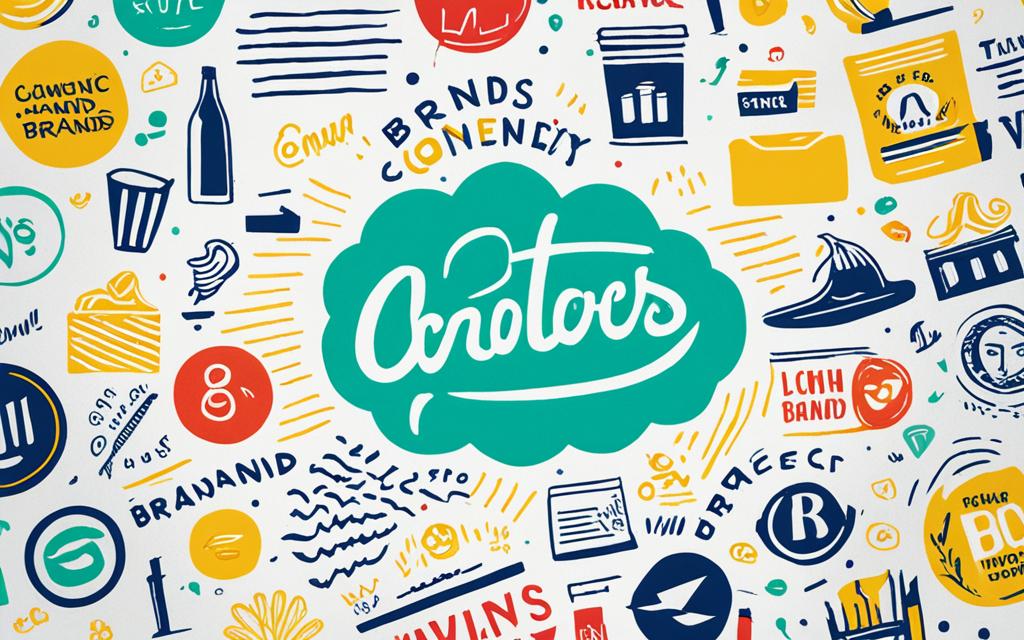Crafting a captivating brand story is the cornerstone of a successful business. In this comprehensive guide, you’ll embark on a transformative journey to elevate your brand narrative, from the initial spark of inspiration to a fully-fledged brand storytelling experience that resonates with your target audience. Discover the essential steps to develop a brand story that sets you apart, engages your customers, and propels your brand development forward.
Whether you’re a seasoned entrepreneur or a rising industry player, this guide will equip you with the necessary tools and strategies to craft a compelling branding strategy that captivates and inspires. Dive in and unlock the power of brand storytelling to elevate your business to new heights.
Brainstorming and Conceptualization: The Foundation of Your Brand Story
Crafting a captivating brand story starts with a solid foundation of brainstorming and conceptualization. This essential process lays the groundwork for your brand narrative, personality, and values – the very essence that will resonate with your target audience and set you apart in the market.
Crafting a Compelling Brand Narrative
Your brand narrative is the heart of your storytelling efforts. It’s the guiding thread that weaves together your business’s history, mission, and unique value proposition. Begin by brainstorming key moments, milestones, and insights that shaped your brand’s journey. Distill these elements into a cohesive, engaging narrative that captures the spirit of your brand and inspires your audience to connect with it.
Defining Your Brand’s Personality and Values
Just as individuals have distinct personalities, so too should your brand. Brainstorm the adjectives and attributes that best describe your brand, from its tone of voice to its visual aesthetic. Defining your brand’s personality will help you establish a consistent and authentic identity that resonates with your target audience.
Hand-in-hand with your brand’s personality are its core values. These guiding principles should be deeply rooted in your brand’s purpose and mission, informing every aspect of your storytelling and decision-making. Engage in brand brainstorming sessions to uncover the values that are truly integral to your brand and that you can consistently uphold.
By investing time in the foundational work of brainstorming and conceptualization, you’ll lay the groundwork for a compelling, authentic, and impactful brand story. This solid foundation will empower you to craft a narrative that resonates with your audience, strengthens your brand’s identity, and sets the stage for a successful brand journey.
Structuring Your Brand’s Narrative: Crafting an Engaging Journey
Crafting an engaging brand narrative is crucial in captivating your audience and forging a lasting connection with your brand. To structure your brand’s narrative, you must leverage proven brand storytelling techniques that guide your audience through a captivating and memorable experience.
The brand narrative structure you choose can greatly impact the effectiveness of your brand journey. By organizing your brand’s story into a structured and cohesive narrative, you can ensure your audience remains engaged and invested in your brand’s evolution.
Establish a Compelling Narrative Arc
Your brand’s narrative should follow a well-defined arc that resonates with your audience. Consider incorporating classic storytelling elements, such as:
- An engaging introduction that piques your audience’s interest
- A rising action that builds anticipation and tension
- A climax that showcases your brand’s unique value proposition
- A resolution that leaves a lasting impression and strengthens your audience’s connection to your brand
By weaving these narrative elements together, you can craft a brand story structure that captivates and inspires your audience, fostering a deeper level of brand engagement.
Leverage Proven Storytelling Techniques
Incorporating tried-and-true brand storytelling techniques can enhance the impact of your brand’s narrative. Consider incorporating elements such as:
- Relatable characters that your audience can connect with on an emotional level
- Vivid sensory details that immerse your audience in your brand’s world
- Compelling plot twists that keep your audience engaged and guessing
- A clear call-to-action that inspires your audience to take the next step in their brand journey
By weaving these storytelling techniques into your brand’s narrative, you can create a captivating and memorable brand journey that resonates with your audience.
| Narrative Element | Description | Example |
|---|---|---|
| Introduction | Piques the audience’s interest and sets the stage for the story. | Imagine a world where your daily commute is transformed into a serene, nature-inspired experience. |
| Rising Action | Builds anticipation and tension, leading to the climax. | As you step into your electric vehicle, the sights and sounds of the bustling city fade, replaced by the gentle hum of the motor and the lush greenery lining the streets. |
| Climax | Showcases the brand’s unique value proposition and resolves the story’s central conflict. | With each mile, you feel your stress melt away, replaced by a sense of calm and connection to the world around you. This is the power of our sustainable mobility solution. |
| Resolution | Leaves a lasting impression and strengthens the audience’s connection to the brand. | As you arrive at your destination, you step out of the vehicle, refreshed and ready to take on the day. This is the future of transportation, and it’s waiting for you. |
“A well-crafted brand narrative can transform a product or service into a meaningful and memorable experience for your audience.”
By structuring your brand’s narrative around a compelling journey and leveraging proven brand storytelling techniques, you can create an engaging and impactful brand experience that resonates with your audience and drives lasting brand engagement.
From Concept to Creation: Developing Your Brand’s Story
Transforming your initial brand concept into a fully-fledged brand story is a crucial step in establishing a strong and relatable connection with your target audience. By aligning your brand narrative with the needs, pain points, and aspirations of your customers, you can create a captivating and memorable brand experience that resonates on a deeper level.
Aligning Your Brand Story with Your Target Audience
Effective brand story development starts with a deep understanding of your target audience. Conduct thorough research to identify their demographic characteristics, preferences, and the challenges they face. Utilize this insights to craft a brand narrative that directly addresses their specific needs and desires. Ensure that your brand’s personality, values, and messaging resonate with your target market, fostering a sense of connection and authenticity.
Incorporating Storytelling Techniques into Your Brand Messaging
Bring your brand story to life by incorporating proven storytelling techniques into your brand messaging. Utilize elements such as relatable characters, emotional appeal, and a well-structured narrative arc to create a compelling and memorable brand experience. Leverage these techniques across various touchpoints, from your website and social media to your product packaging and marketing materials, to ensure a consistent and impactful brand story.
“The most powerful stories tap into the universal human experiences of love, loss, triumph, and transformation. By weaving these themes into your brand narrative, you can create a deep, emotional connection with your audience.”
Remember, the key to successful brand story development lies in your ability to balance creativity and strategy. Continuously refine your approach, gather feedback, and adapt your brand story to ensure it remains relevant and resonates with your target audience.
Visual and Verbal Storytelling Elements: Bringing Your Brand to Life
Crafting a compelling brand story is only the first step in captivating your audience. To truly bring your brand to life, you need to strategically leverage both visual and verbal storytelling elements. By creating a cohesive visual identity and leveraging verbal storytelling techniques across multiple brand touchpoints, you can immerse your audience in a consistent and engaging brand experience.
Crafting a Cohesive Visual Identity
Your brand’s visual identity is the foundation of your brand visual storytelling. From your logo and color palette to your imagery and typography, each visual element should work together to reflect your brand’s personality and values. By developing a cohesive visual identity, you can create a strong and recognizable brand that resonates with your target audience.
Consider the following elements when crafting your brand’s visual identity:
- Logo design: Ensure your logo is memorable, versatile, and aligned with your brand’s personality.
- Color palette: Choose a color scheme that evokes the right emotions and supports your brand’s messaging.
- Imagery: Curate visuals that capture the essence of your brand and tell a compelling story.
- Typography: Select typography that complements your brand’s tone and enhances readability across all touchpoints.
Leveraging Verbal Storytelling Across Multiple Touchpoints
While your visual identity sets the stage, your brand verbal storytelling brings your brand to life through the power of language. Craft a cohesive and engaging narrative that resonates with your target audience across all your brand touchpoints, from your website and social media to your marketing materials and customer interactions.
Effective brand verbal storytelling includes:
- Developing a distinct brand voice and tone that aligns with your brand’s personality and values.
- Creating compelling copy that captivates your audience and reinforces your brand’s messaging.
- Ensuring brand consistency in your written communication to build trust and familiarity with your audience.
By seamlessly integrating your visual and verbal storytelling elements, you can create a brand visual identity that truly comes to life and resonates with your audience on a deeper level.
| Visual Storytelling Elements | Verbal Storytelling Elements |
|---|---|
|
|
“Consistent branding across all touchpoints is crucial for building trust and recognition with your target audience.”
Conclusion: Launching and Promoting Your Brand Story
As you’ve diligently crafted your brand’s captivating narrative, the time has come to launch and promote your story to the world. This is the crucial step that will build brand awareness, foster deeper engagement with your target audience, and drive the growth and success of your business.
Begin by sharing your brand story across your various digital and physical touchpoints, from your website and social media platforms to your product packaging and marketing materials. Leverage the power of visuals, videos, and interactive content to bring your narrative to life and make a lasting impression on your audience.
Engage with your customers and followers by inviting them to be a part of your brand’s journey. Encourage them to share their own experiences and perspectives, creating a dynamic and authentic dialogue that strengthens your brand’s connection with the people who matter most.






